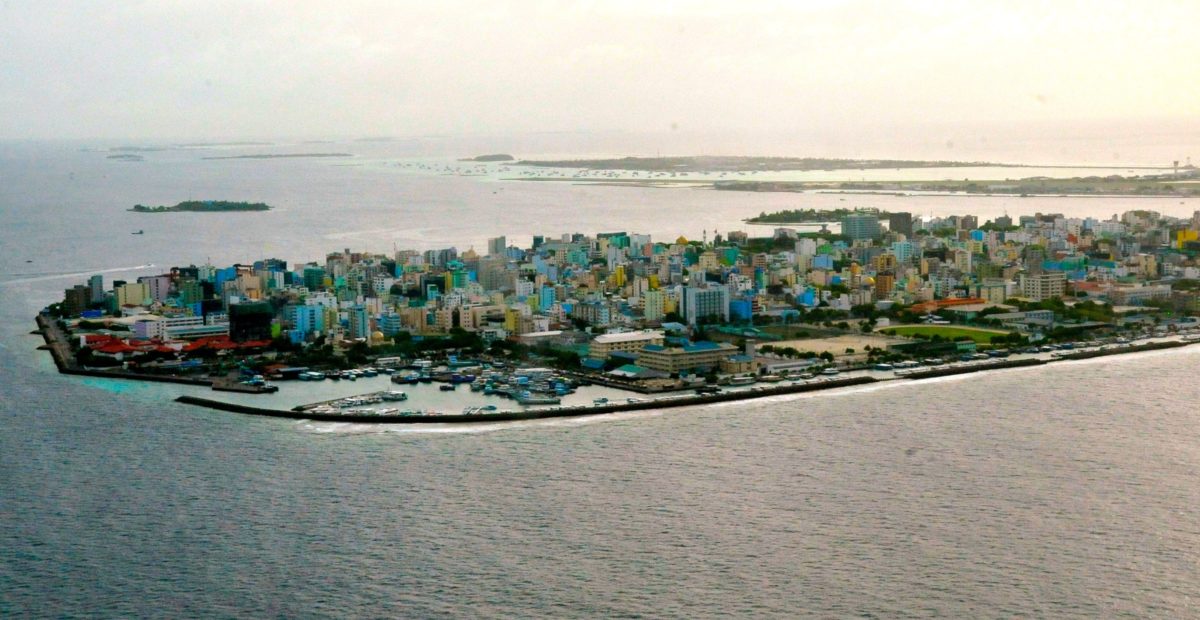Three decades later, the country is still above water, even though its “sinking paradise” nickname remains a constant refrain. On the 199 inhabited islands of the archipelago, off-grid electricity is the norm. Electricity was introduced in 1949, but many resorts on the islands are still massive diesel guzzlers. However, renewable energy — especially solar — is being promoted as the best energy-provider. There are many reasons for Maldives to go solar, as the nation is located near the equator and receives roughly 300 days of sunshine per year.
The country took its first step toward renewable energy in 2009, when the government announced plans to become carbon neutral by 2020. State Electric Company Limited (STELCO), the country’s main utility, initiated a plan to build 652 kWp of solar capacity across six islands, with the aim of meeting 30% of daytime peak demand on each island.
In 2012, Renewable Energy Maldives Pvt. Ltd (REM) and Wirsol APAC installed and connected a grid-connected PV system on Villingili, the first of the six islands to go solar. The project was also the first in the country to be backed by a power purchase agreement between a private company and a utility.
The country currently has 16 MW of installed solar capacity and the push to embrace renewables is getting bigger by the day. As part of its national carbon-neutral plan, the Maldives’ Ministry of Economic Development has set a mandatory target for the country to generate at least 60% of its electricity from solar by 2020.
The government’s Greater Malé Region Renewable Energy Integration Plan and the USAID Maldives Submarine Cable Interconnection Pre-Feasibility Study had detailed how the nation’s strong solar resource makes solar PV an attractive option. However, land constraints continue to limit the deployment of ground-mounted PV systems. Yet solar water heating, seawater air conditioning and solar air conditioning technologies provide significant opportunities to lower electricity demand in the Maldives.
The Renewable Energy Framework (REM) plan also proposes a shift to wind, batteries and biomass to complement solar power, while retaining existing diesel generators for reserve power. The REM is playing an important role in the Maldives’ renewable ambitions. The REM is the local contractor for the World Bank’s “Renewable Energy Resource Mapping and Geospatial Planning — Maldives” project, which focuses on the mapping of solar resources, as well as measurement services, in close coordination with the Ministry of Environment and Energy. The project’s second objective is to build a network of solar-measuring stations and to implement a long-term and sustainable resource monitoring program as one of the support mechanisms for the development of solar in the Maldives.
Dr. Ibrahim Nashid, the chairman of Renewable Energy Maldives, told pv magazine that the country’s current installed PV capacity is 16 MW. “The Maldives need to look at energy security seriously to meet its development needs. Renewable energy in the Maldives provides that security while protecting our environment. We have to harness it wisely,” Nashid said.
The country’s resorts have long been completely diesel-dependent, but are now trying to go green. In May 2016, Club Med Finolhu Villas resort (Gasfinolhu Island) became the world’s first solar-powered resort. In December 2018, Kudadoo resort (Lhaviyani Atoll) commissioned a 320 kW system that was strategically arranged in rows to allow natural light to filter in. The message: No need for discretion, as energy saving and luxury can, and should, work in tandem (one-bedroom bungalows for two start at $4,000 per night).
In Renewable Energy Roadmap for the Republic of Maldives, the International Renewable Energy Agency (IRENA) calls for renewable electricity generation to account for at least 30% of daytime peak load on all inhabited islands by 2019. The report can be seen as a first step toward driving the deployment of renewables, but the target is below the economically optimal deployment level for the Maldives. It will also not have a significant impact on the reduction of fuel imports and electricity costs, with an average reduction of diesel consumption well below 10%, and much less on islands with limited daytime air-conditioning usage.
The “sinking paradise” has averted disaster for now, but the Maldives will have to aggressively push its renewable-energy ambitions to survive over the long term.
This content is protected by copyright and may not be reused. If you want to cooperate with us and would like to reuse some of our content, please contact: editors@pv-magazine.com.








By submitting this form you agree to pv magazine using your data for the purposes of publishing your comment.
Your personal data will only be disclosed or otherwise transmitted to third parties for the purposes of spam filtering or if this is necessary for technical maintenance of the website. Any other transfer to third parties will not take place unless this is justified on the basis of applicable data protection regulations or if pv magazine is legally obliged to do so.
You may revoke this consent at any time with effect for the future, in which case your personal data will be deleted immediately. Otherwise, your data will be deleted if pv magazine has processed your request or the purpose of data storage is fulfilled.
Further information on data privacy can be found in our Data Protection Policy.